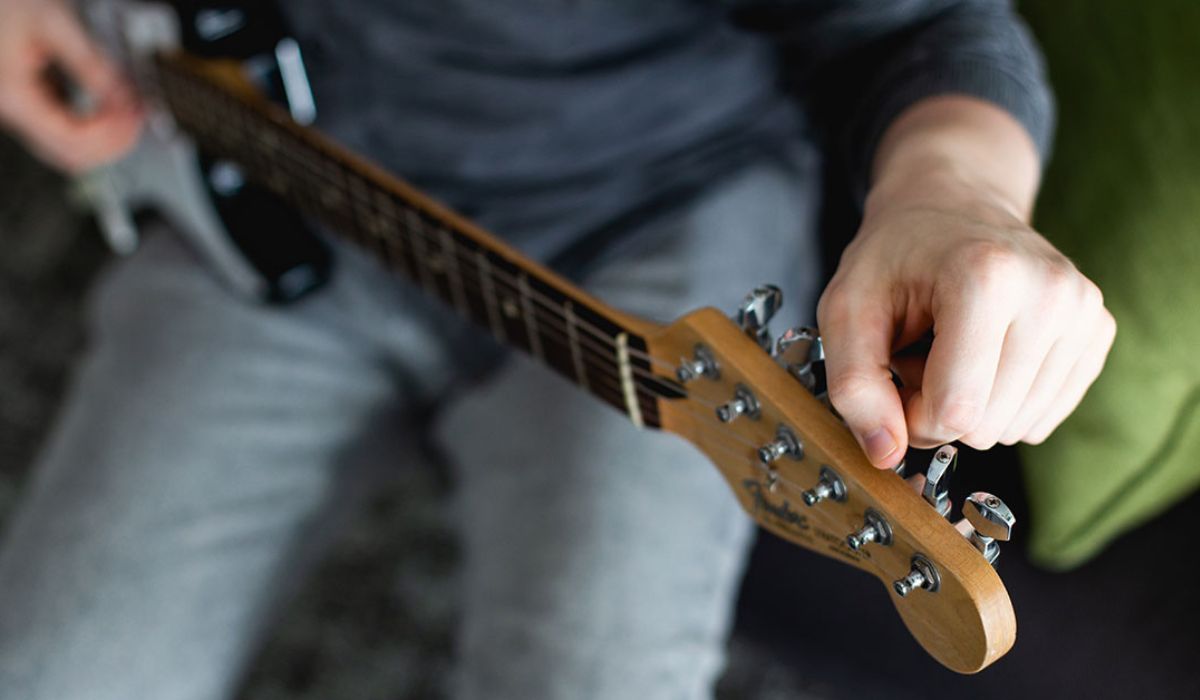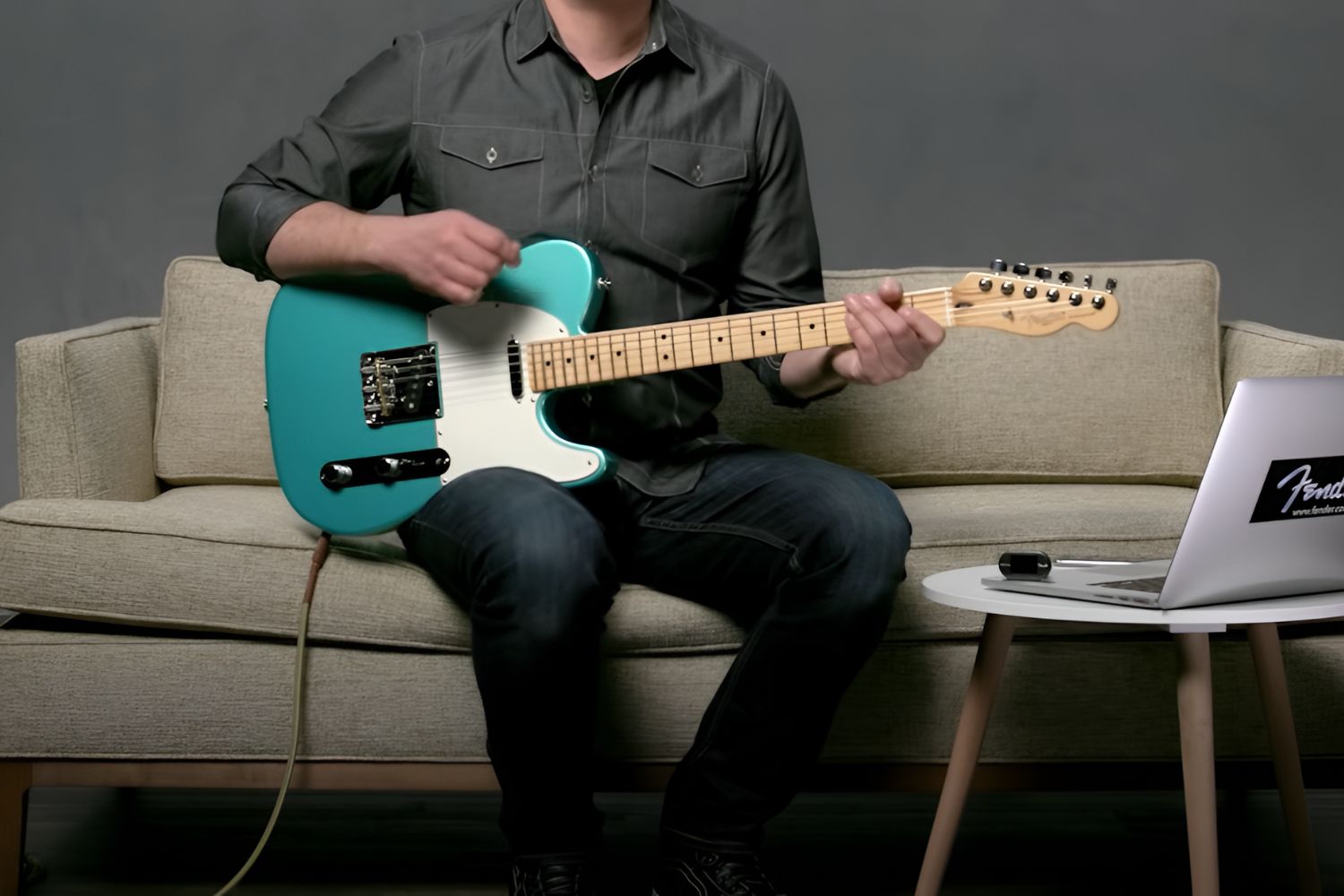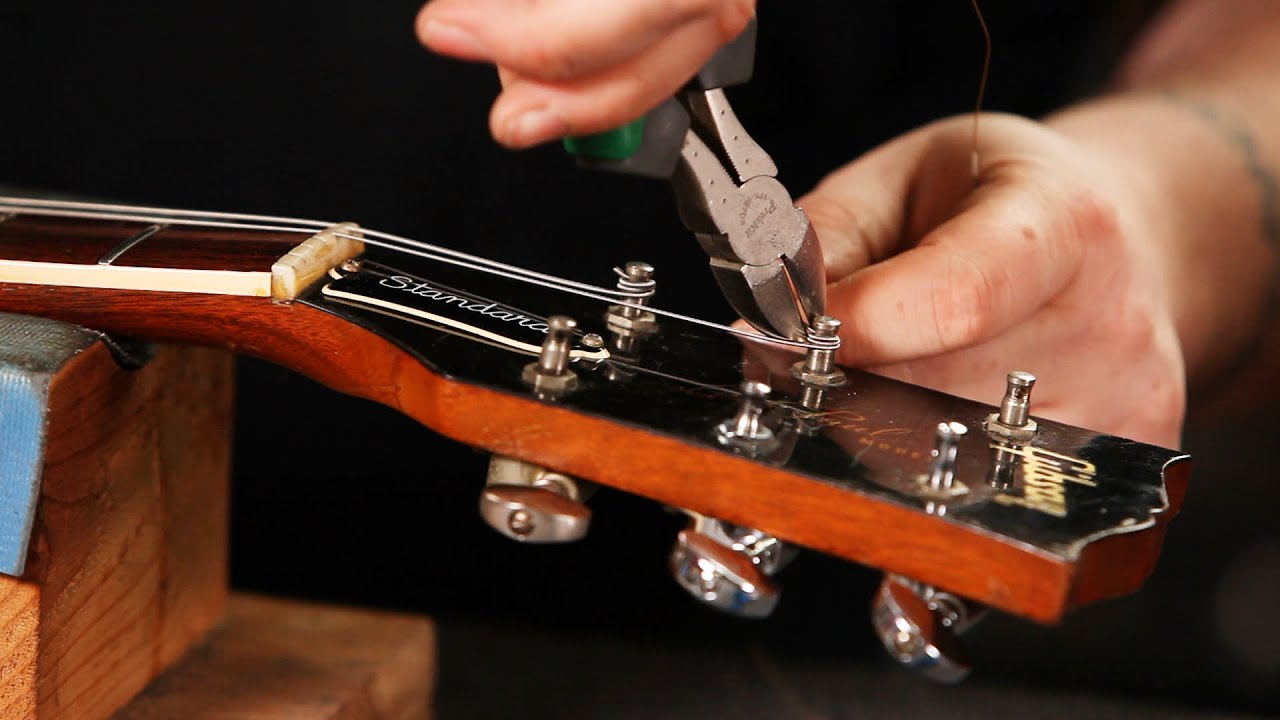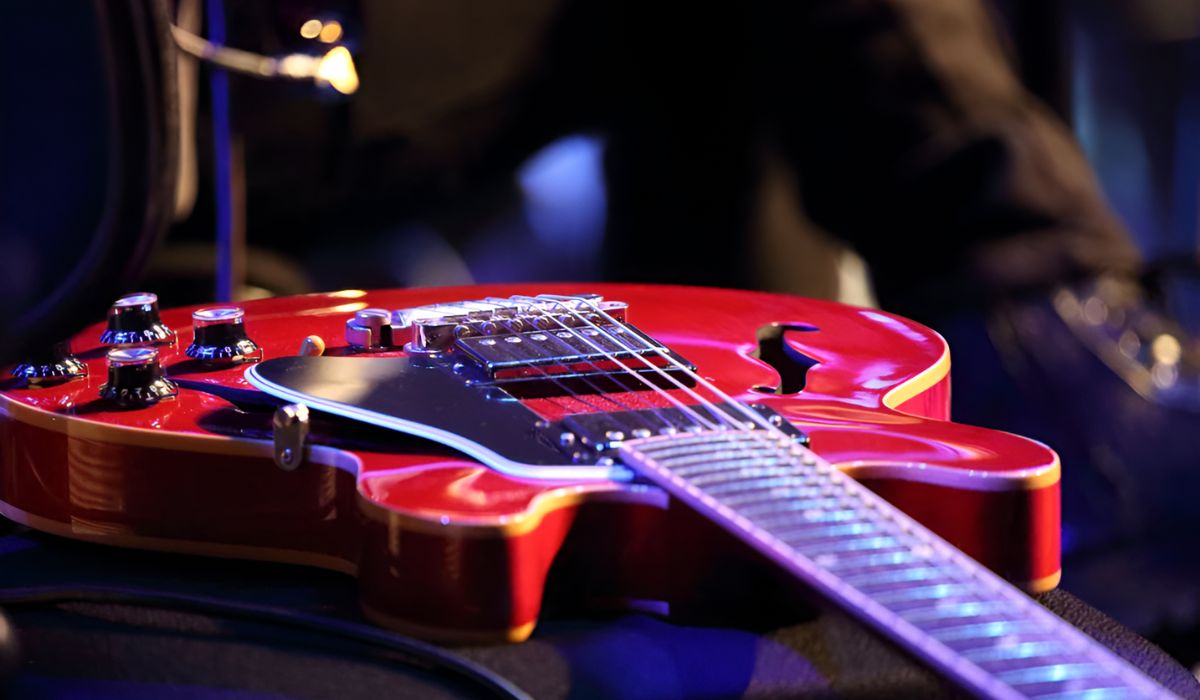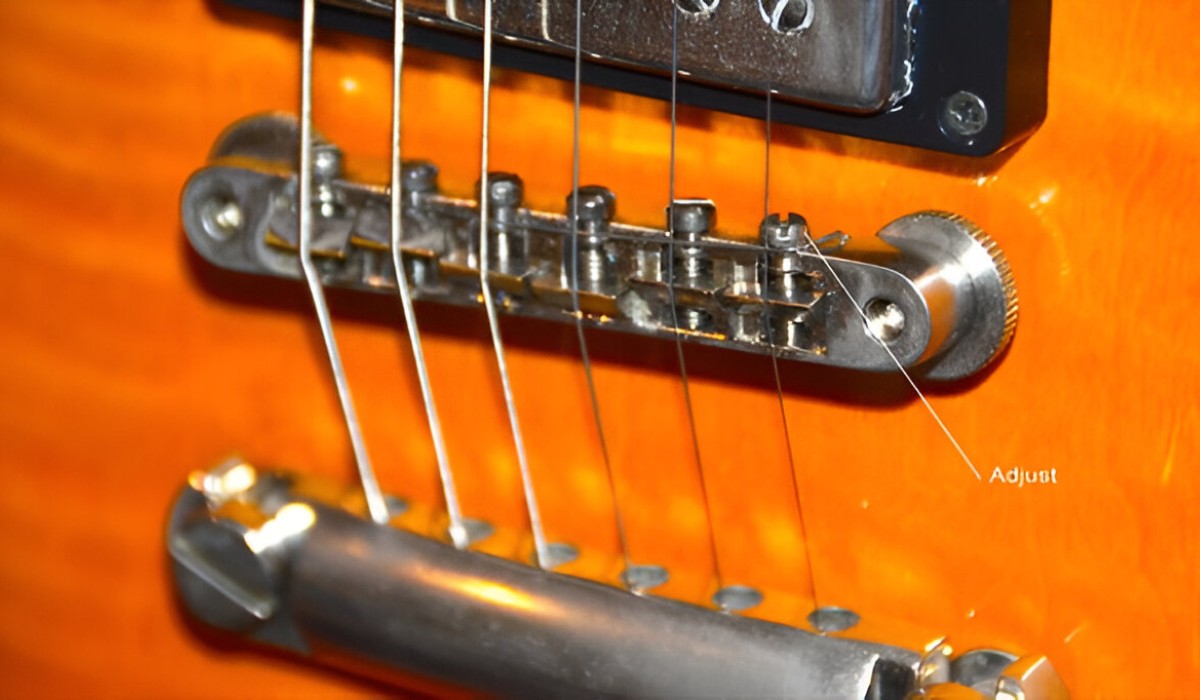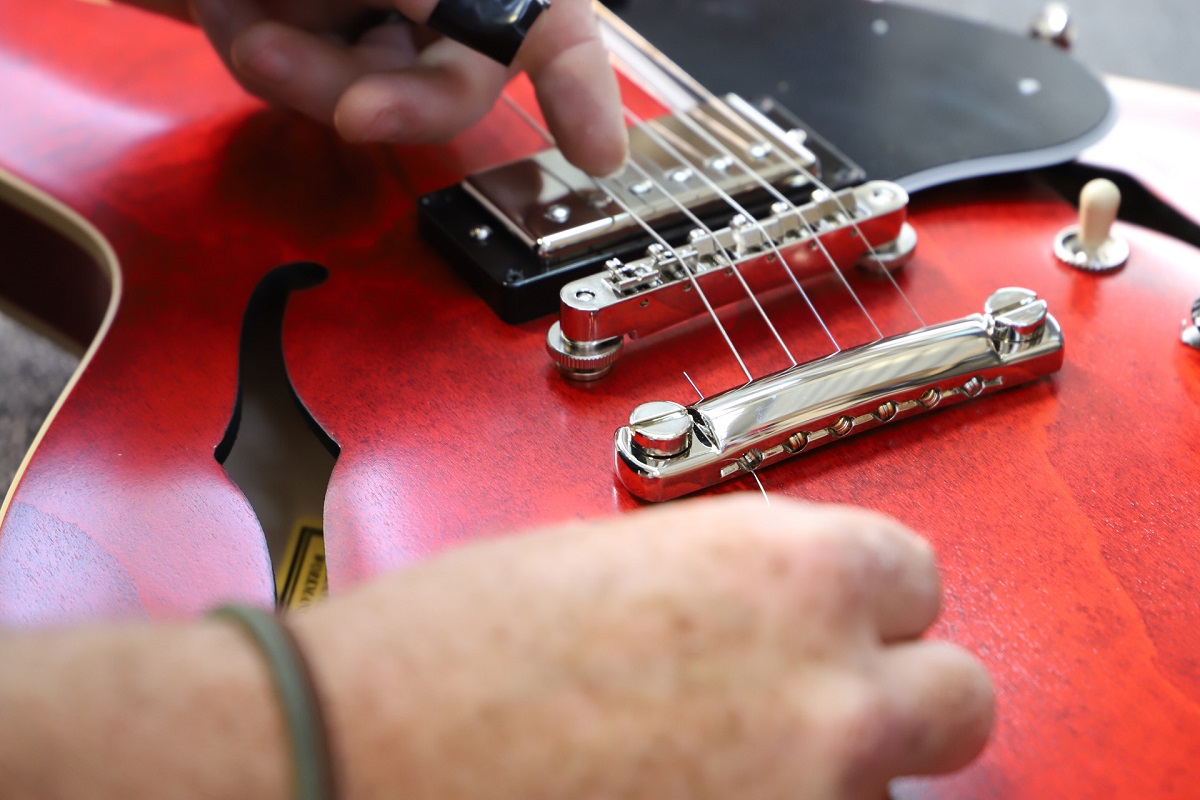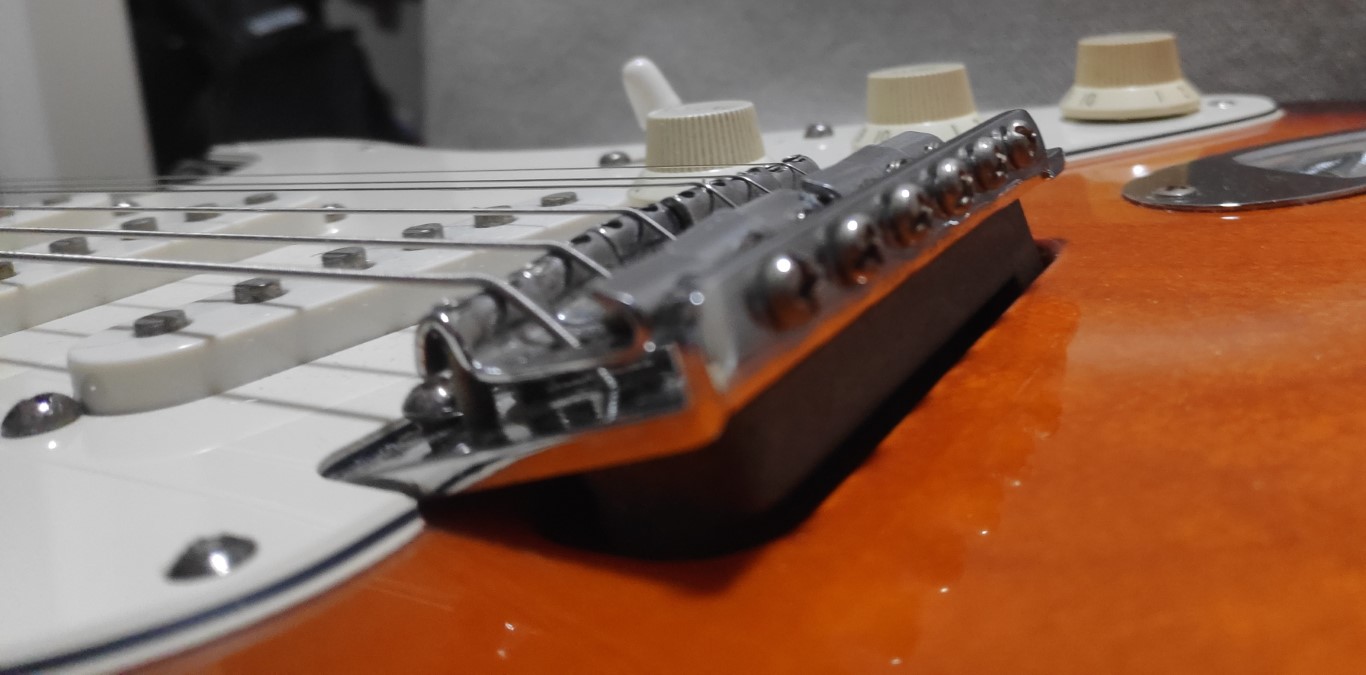Introduction
Tuning an electric guitar without a tuner may seem like a daunting task, but with the right techniques, it can be a rewarding experience that enhances your musical skills. Whether you're a beginner guitarist or a seasoned player, understanding the fundamentals of tuning by ear is invaluable. While electronic tuners offer convenience, learning to tune your guitar without one not only sharpens your ear but also allows you to tune up anytime, anywhere, without relying on technology.
Tuning your guitar by ear fosters a deeper connection with your instrument, enabling you to develop a keen sense of pitch and a more intuitive understanding of the instrument's nuances. This article will guide you through various methods to tune your electric guitar without a tuner, empowering you to hone your musical abilities and play in tune with confidence.
Tuning an electric guitar without a tuner involves relying on your auditory perception and utilizing external references to achieve the correct pitch for each string. Understanding the standard tuning of the guitar and employing techniques such as using a reference pitch, harmonics, a piano or keyboard, and even a pitch pipe or tuning fork can help you achieve precise tuning without the aid of a digital tuner.
By mastering the art of tuning without a tuner, you'll not only be able to keep your guitar in perfect pitch but also gain a deeper understanding of the instrument's sonic characteristics. This skill is invaluable in various musical contexts, whether you're jamming with friends, performing on stage, or simply practicing at home. Let's delve into the techniques and methods that will enable you to tune your electric guitar accurately and develop a heightened sense of musicality.
Understanding the Standard Tuning
Before delving into the methods of tuning an electric guitar without a tuner, it’s crucial to grasp the standard tuning of the instrument. The standard tuning for a 6-string electric guitar, from the lowest-pitched string to the highest, is EADGBE. Each letter represents the pitch of the open string when strummed without fretting any notes. This foundational knowledge serves as a reference point for achieving accurate tuning by ear.
The lowest-pitched string, the 6th string, is tuned to E. Moving upward, the 5th string is tuned to A, followed by the 4th string to D, the 3rd string to G, the 2nd string to B, and finally, the 1st string to E. Familiarizing yourself with the standard tuning provides a framework for understanding the intervals between the strings and ensures that your guitar is in harmony with itself when tuned correctly.
By internalizing the standard tuning, you can develop a mental map of the guitar’s sonic landscape, enabling you to identify discrepancies in pitch and make precise adjustments without the aid of a digital tuner. This foundational understanding is essential for navigating the process of tuning by ear and honing your ability to discern subtle variations in pitch.
Furthermore, comprehending the standard tuning equips you with the knowledge to recognize when your guitar is out of tune, allowing you to address tuning issues promptly and efficiently. Whether you’re playing chords, scales, or melodies, being in tune is paramount, and understanding the standard tuning is the first step toward achieving sonic coherence and musical excellence.
As you embark on the journey of tuning your electric guitar without a tuner, keep the standard tuning in mind as a fundamental reference point. This knowledge will serve as a cornerstone for honing your ear and mastering the art of achieving precise pitch, laying the groundwork for a harmonious and melodious musical experience.
Using a Reference Pitch
When tuning an electric guitar without a tuner, utilizing a reference pitch is a valuable method for achieving accurate tuning by ear. A reference pitch serves as a point of comparison, allowing you to adjust the strings of your guitar to match the desired pitch. One common reference pitch is the 5th fret of the 5th string, which is an A note. By tuning the 6th string to match the pitch of the 5th fret of the 5th string, you can establish a reliable reference point for tuning the remaining strings.
Begin by fretting the 5th fret of the 5th string and plucking the string to produce the A note. As you listen to the sound, adjust the tuning peg of the 6th string until it matches the pitch of the A note. Once the 6th string is in tune with the reference pitch, you can proceed to tune the remaining strings in relation to the 6th string.
Using the 5th fret of the 5th string as a reference pitch provides a consistent and harmonious tuning foundation. This method not only facilitates accurate tuning but also trains your ear to discern pitch discrepancies and make precise adjustments. As you progress in your tuning process, periodically revisiting the reference pitch can help ensure that your guitar remains in tune across all strings.
Additionally, you can employ alternative reference pitches, such as utilizing a tuning fork or a pitch pipe to establish the initial reference point for tuning. These tools provide a fixed pitch that serves as a reliable guide for aligning the strings of your electric guitar. By incorporating reference pitches into your tuning routine, you can cultivate a heightened sense of pitch and develop the ability to tune your guitar accurately without the aid of a digital tuner.
Mastering the technique of using a reference pitch empowers you to achieve precise tuning by ear, fostering a deeper connection with your instrument and enhancing your musical proficiency. As you refine your skills in utilizing reference pitches, you’ll gain the confidence to tune your electric guitar with accuracy and finesse, ensuring that your musical endeavors are characterized by harmonious and resonant melodies.
Using Harmonics to Tune
Harmonics offer an alternative method for tuning an electric guitar without a tuner, leveraging the natural overtones produced by the instrument to achieve precise tuning by ear. Harmonics, also known as “flageolets,” are bell-like tones created by lightly touching the strings at specific nodal points while plucking them. These nodal points occur at the 5th, 7th, and 12th frets of the guitar, where harmonic overtones can be produced.
To utilize harmonics for tuning, begin by lightly placing your finger directly above the 5th fret wire without pressing it down, and pluck the string. This technique produces a harmonic overtone that resonates at twice the frequency of the open string. By comparing the harmonic at the 5th fret to the harmonic at the 7th fret on the adjacent string, you can adjust the tuning peg to ensure that the pitch interval between the two strings is accurate.
Another harmonic tuning method involves using the 12th fret harmonic, which produces a tone exactly one octave higher than the open string. By comparing the harmonic at the 12th fret to the harmonic at the 7th fret of the adjacent string, you can fine-tune the pitch relationship between the strings, ensuring that they are in perfect harmony.
Harmonics provide a nuanced approach to tuning by ear, allowing you to discern subtle pitch differentials and achieve precise string-to-string intervals. This method not only enhances your ability to tune the guitar accurately but also deepens your understanding of the instrument’s harmonic properties, fostering a heightened awareness of pitch relationships and resonance.
Furthermore, incorporating harmonics into your tuning routine cultivates a refined ear for discerning tonal nuances, enriching your musical experience and enabling you to maintain impeccable tuning without relying on a digital tuner. As you master the art of using harmonics to tune your electric guitar, you’ll develop a keen sensitivity to the instrument’s sonic intricacies, enhancing your musical expression and performance.
Using a Piano or Keyboard
Utilizing a piano or keyboard as a tuning reference provides a reliable method for achieving accurate tuning of an electric guitar without the aid of a digital tuner. The piano’s keys are precisely tuned to specific pitches, offering a stable and consistent reference for aligning the strings of the guitar. If you have access to a piano or keyboard, you can leverage it as a valuable tool for tuning your electric guitar by ear.
Begin by identifying the corresponding pitches on the piano or keyboard for the open strings of the guitar. The E note on the piano aligns with the low E string of the guitar, serving as a reference point for tuning the 6th string. Similarly, the A, D, G, B, and high E notes on the piano correspond to the pitches of the remaining strings of the guitar.
Pluck the open string of the guitar and simultaneously play the corresponding note on the piano or keyboard. Listen carefully to the harmonic relationship between the two pitches, and adjust the tuning peg of the guitar string until it matches the pitch of the piano key. This method allows you to achieve precise tuning by aligning the guitar’s strings with the accurately tuned notes of the piano.
Using a piano or keyboard as a tuning reference not only facilitates accurate tuning by ear but also provides a sonic benchmark for ensuring that your guitar is in harmony with other musical instruments. This method enhances your ability to discern pitch differentials and develop a keen ear for achieving precise tuning across all strings of the electric guitar.
Moreover, the tactile and visual nature of using a piano or keyboard as a tuning reference offers a multi-sensory approach to tuning by ear, enriching your musical experience and deepening your understanding of pitch relationships. By integrating the piano or keyboard into your tuning routine, you can refine your ear for pitch, cultivate a heightened sense of sonic accuracy, and elevate your musical performance.
Tuning with a Pitch Pipe or Tuning Fork
Utilizing a pitch pipe or tuning fork offers a traditional yet effective method for tuning an electric guitar without the aid of a digital tuner. These portable and reliable tools provide fixed pitches that serve as reference points for aligning the strings of the guitar with precise tuning.
A pitch pipe typically consists of a small, handheld device with individual reeds or pipes that produce specific pitches when blown into. Each pipe is labeled with the corresponding note, enabling you to generate the desired reference pitch for tuning your electric guitar. By blowing into the pitch pipe and listening to the emitted pitch, you can adjust the tuning pegs of the guitar strings to match the designated notes, ensuring accurate tuning by ear.
Similarly, a tuning fork, a metal instrument with two prongs that vibrate to produce a specific pitch, can be employed as a tuning reference. When struck against a solid surface, the tuning fork emits a pure tone at a consistent frequency. By placing the base of the tuning fork against the body of the guitar or a resonant surface and allowing the tone to resonate, you can compare the pitch of the tuning fork to the corresponding strings of the guitar, adjusting the tuning pegs to achieve precise tuning.
Both the pitch pipe and tuning fork provide stable and consistent reference pitches, enabling you to align the strings of your electric guitar with accuracy and finesse. These traditional tuning tools not only facilitate precise tuning by ear but also cultivate a heightened sensitivity to pitch relationships, enhancing your ability to discern and adjust the guitar’s strings to achieve harmonic coherence.
Furthermore, incorporating a pitch pipe or tuning fork into your tuning routine offers a tangible and auditory approach to achieving precise tuning, enriching your musical experience and deepening your connection with the instrument. By honing your skills in utilizing these traditional tuning tools, you can refine your ear for pitch, develop a keen sense of sonic accuracy, and maintain impeccable tuning without reliance on digital technology.
Conclusion
Tuning an electric guitar without a tuner is a skill that not only enhances your musical abilities but also fosters a deeper connection with your instrument. By mastering the art of tuning by ear, you can develop a heightened sense of pitch, refine your auditory perception, and maintain precise tuning in diverse musical contexts.
Understanding the standard tuning of the guitar serves as a foundational reference point for achieving accurate tuning by ear. Familiarizing yourself with the standard tuning not only enables you to navigate the tuning process with confidence but also deepens your understanding of the instrument’s sonic characteristics.
Utilizing various methods, such as using a reference pitch, harmonics, a piano or keyboard, and traditional tuning tools like a pitch pipe or tuning fork, empowers you to achieve precise tuning without the aid of a digital tuner. These techniques not only cultivate a refined ear for discerning pitch nuances but also enrich your musical experience, enabling you to maintain impeccable tuning across all strings of the electric guitar.
By honing your skills in tuning without a tuner, you can embrace the art of achieving sonic coherence and harmonic precision, elevating your musical performance and creativity. Whether you’re practicing at home, jamming with fellow musicians, or performing on stage, the ability to tune your electric guitar by ear is a valuable asset that enhances your musical journey and enriches your artistic expression.
As you continue to explore the world of guitar playing, remember that tuning by ear is not just a technical skill but an art form that deepens your connection with the instrument and amplifies the joy of creating music. Embrace the process of tuning without a tuner as an opportunity to refine your musical ear, enhance your playing, and embark on a harmonious and melodious musical adventure.







